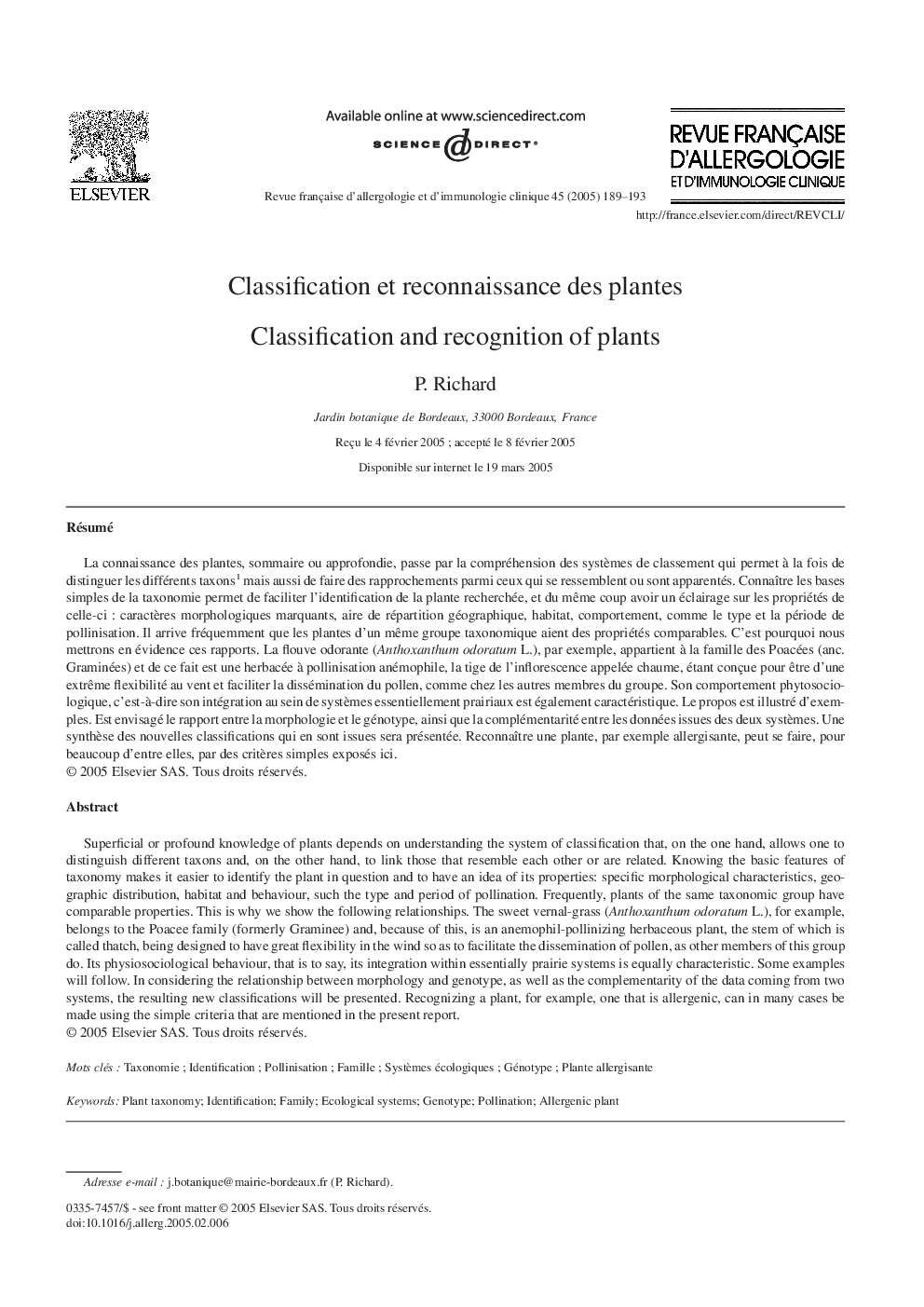| Article ID | Journal | Published Year | Pages | File Type |
|---|---|---|---|---|
| 9100281 | Revue Française d'Allergologie et d'Immunologie Clinique | 2005 | 5 Pages |
Abstract
Superficial or profound knowledge of plants depends on understanding the system of classification that, on the one hand, allows one to distinguish different taxons and, on the other hand, to link those that resemble each other or are related. Knowing the basic features of taxonomy makes it easier to identify the plant in question and to have an idea of its properties: specific morphological characteristics, geographic distribution, habitat and behaviour, such the type and period of pollination. Frequently, plants of the same taxonomic group have comparable properties. This is why we show the following relationships. The sweet vernal-grass (Anthoxanthum odoratum L.), for example, belongs to the Poacee family (formerly Graminee) and, because of this, is an anemophil-pollinizing herbaceous plant, the stem of which is called thatch, being designed to have great flexibility in the wind so as to facilitate the dissemination of pollen, as other members of this group do. Its physiosociological behaviour, that is to say, its integration within essentially prairie systems is equally characteristic. Some examples will follow. In considering the relationship between morphology and genotype, as well as the complementarity of the data coming from two systems, the resulting new classifications will be presented. Recognizing a plant, for example, one that is allergenic, can in many cases be made using the simple criteria that are mentioned in the present report.
Related Topics
Health Sciences
Medicine and Dentistry
Anesthesiology and Pain Medicine
Authors
P. Richard,
